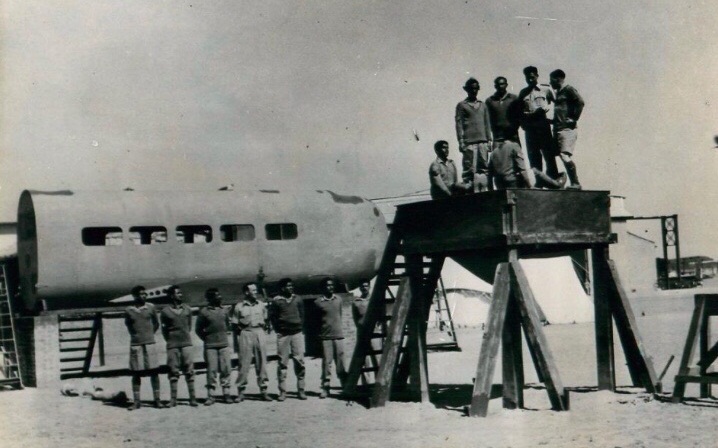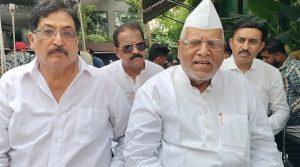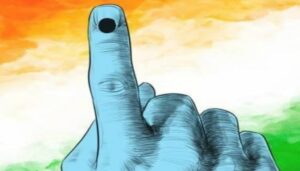Military History – Jinnah’s Dias, Barging Buffaloes And Reunion In No Man’s Land: 411’s Unique Story

Sandeep Saini
Pune, 19th June 2021: Benjamin Franklin while observing giant balloons in 1784 had mused, “where is the prince who can afford so to cover his country with troops for its defence, so that ten thousand men descending from the clouds might not, in many places, do an infinite deal of mischief before a force could be brought together to repel them ?”
He had perhaps for the first time in world history given birth to the idea of airborne soldiers.
Winston Churchill was the next famous proponent of dropping these “ flying squads” behind the German lines to destroy its bridges and vital points in WW1 and then, a US colonel and a major almost launched the first airborne assault in world military history but WW1 ended by then and everybody went home happy.
It was the Soviets who first experimented with airdrops of infantry troops in the 1930s and staged a demonstration for many nation’s representatives. One spectator, a German loved the idea.
Cut to WW2 and Germany shocked the whole world during its attack on Crete islands by employing large scale airborne assaults which achieved a major military target. The modern-day era of parachute and special forces was born.
The British and Americans hurried suit to raise and equip their parachute forces.
Almost simultaneously the British Indian army raised its own, first parachute force, the 50 Para Brigade in 1941. While in the UK, the task of creating a Para force was given to an officer from the Royal Engineers, in India volunteers were asked by the sappers to form a parachute engineer squadron as part of the 50 Brigade.
Captain MJJ Rolt, a Bengal sapper raised the 411 para field troop in 1941 and soon Bombay and Bengal sapper troops volunteered in large numbers. Much to their dismay, Sikhs were gradually not allowed and replaced by Marathas because they were reluctant to wear parachute helmets over their Pagris and some even feared that their long hairs might be caught in the parachute’s strands.
Due to the larger numbers of Bombay sappers, 411 became a Bombay sapper unit. The training was organised at the Air Landing school (ALS) at Willingdon Airport, New Delhi in two ramshackle Vickers Valencias bomber biplanes. The pilot and co-pilot sat in an open cockpit and an oval-shaped hole was simply cut across the floor of the plane and the jumpers jumped right through.
The dropping zone was a ploughed field where the Neat T3 sits today. The school soon fell short of the rush to become parachutists and was shifted to Chaklala near Rawalpindi in what is now Pakistan.
Dropping height was given as 250 ft as it was felt just enough to deny the enemy from shooting you to eternity but it proved fatal. There were many fatal accidents as the parachutes did not open completely and soon it was revised to 500-600 ft.
The decision was especially welcomed by unit commanders who were expected to make a “pep jump” to show how safe it was.
The dropping of two atom bombs on Japan dismayed the gallant sappers of 411 who were just about to depart as part of the newly formed 2nd Indian Airborne division with two American airborne divisions for landing on the Japanese mainland. The news of unconditional Japanese surrender was met with utter disbelief and disappointment. But perhaps it was all for good. The decision on whether the atomic bombing of japan was a moral or immoral move is still out to the jury, 75 years later but it did save millions of lives on both sides.
Fate has an ironical sense of humour.
Something happened in 1947 which is unthinkable today. An Indian army unit was ordered to make the necessary arrangements for Pakistan’s first flag hoisting as an independent nation on 14 August 1947 and it well, happily obliged. Who could have imagined that 411 para field company (the name was changed to company from squadron in March 1945) will go on to make the saluting Dias for Mohammed Ali Jinnah and be thanked for it while being an Indian unit all this while?
Lt DA Parker Wyatt who was with 411 was given the task of handing over the rope to Jinnah to unfurl the flag. He was quite unsure of the type of hitch required so that as soon as Jinnah pulled it, the flag should come unfurled until the senior sapper present, Lt Col MCA Henniker intervened and solved the problem.
As if this was not enough, the official cavalcade of Jinnah was bifurcated in two by a Buffalo who barged right in between the Rolls Royces and caused great confusion amongst the troops who were about to march off after presenting arms (a kind of military salute) to Jinnah’s and Mountbatten’s car when the second procession of cars came running preceded of course by the bewildered bovine.
Add to it the story of hidden assassins plotting to assassinate Jinnah being in the crowds, India’s partition and this partition of the VIP Escort assumes an ironic symbolism.
It did not end for 411 there.
After partition, the Muslim soldiers of 411 were transferred to Pakistan and joined the 33rd company there at Sialkot. In 1948, barely a year later these two faced each other in war. Little is known about what was served but no one can forget the small, unofficial reunion they organised after arranging a temporary truce on no man’s land. The old bonds were too strong to be severed yet indeed.
 Had it not been for a slightly rebellious Bombay sapper from 411, the tradition of wearing the Parachute wings on the uniform would not have survived in the Indian army today. The story goes that on being repatriated to their regiments centre at Kirkee (Khadki), the CO Depot Battalion told the Para that he can’t wear his red beret here. Fine, said the strapping Maratha, but what right do you have to order the removal of my parachute wings? After some awkwardness, the CO relented and the rest is history.
Had it not been for a slightly rebellious Bombay sapper from 411, the tradition of wearing the Parachute wings on the uniform would not have survived in the Indian army today. The story goes that on being repatriated to their regiments centre at Kirkee (Khadki), the CO Depot Battalion told the Para that he can’t wear his red beret here. Fine, said the strapping Maratha, but what right do you have to order the removal of my parachute wings? After some awkwardness, the CO relented and the rest is history.
Today of course one is allowed to wear the red beret at the regimental centre and everywhere.
411 will go on to play a vital role in the Battle of Sangshak in the Northeast theatre of war during the Second World War but on that later.








